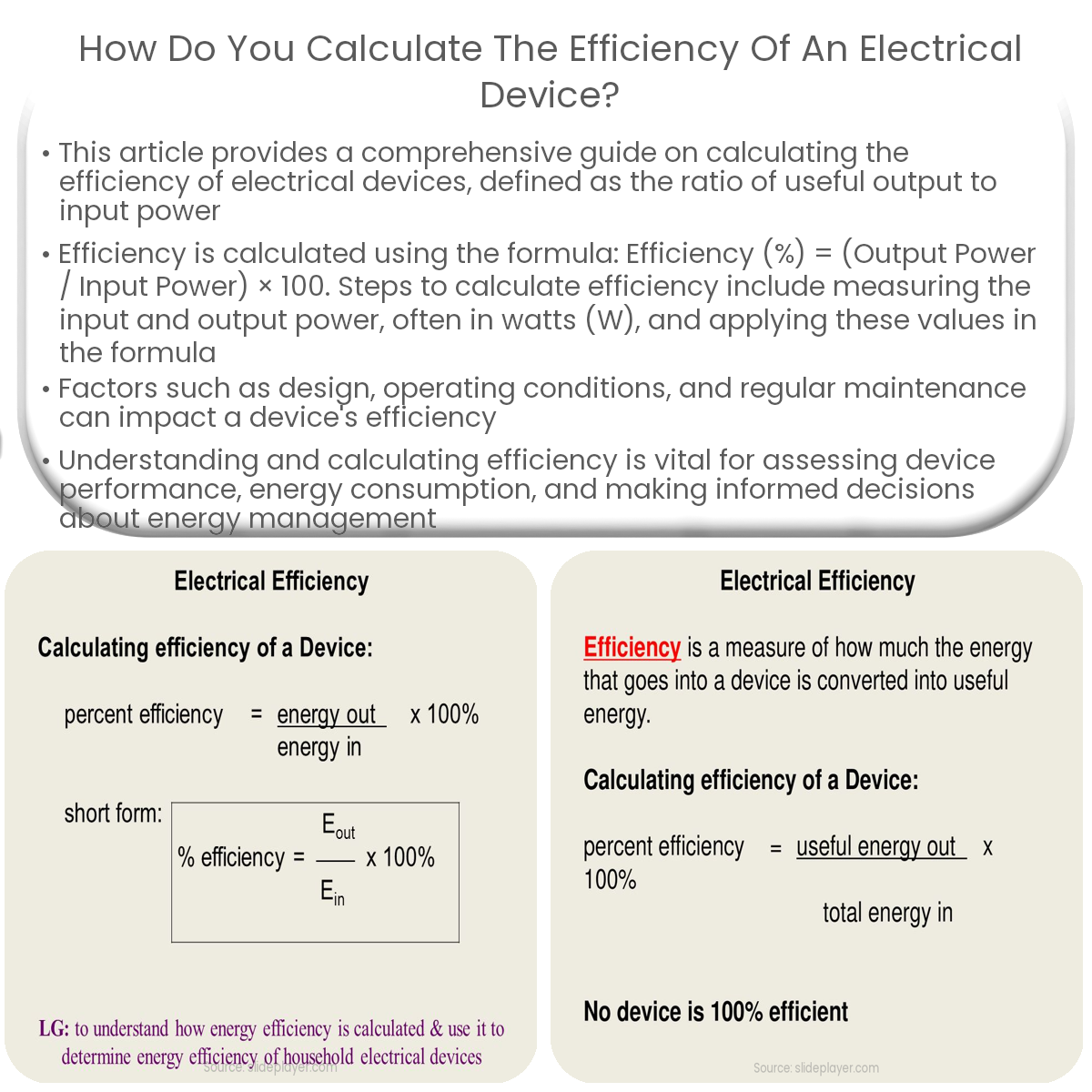To calculate the efficiency of an electrical device, use the formula: Efficiency (%) = (Output Power / Input Power) × 100, measuring power in watts.
Introduction
Efficiency is a crucial metric in evaluating the performance of electrical devices. It indicates the ratio of useful output to input power and helps to assess the energy consumption and overall effectiveness of a device. This article will outline the steps to calculate the efficiency of an electrical device.
Understanding Efficiency
Efficiency is expressed as a percentage and can be calculated using the following formula:
Efficiency (%) = (Output Power / Input Power) × 100
Output power is the useful power delivered by the device, while input power is the total power consumed by the device. To determine the efficiency of an electrical device, you need to measure or obtain both output and input power values.
Step-by-Step Guide to Calculate Efficiency
- Measure the input power: Determine the power consumed by the device in watts (W). This can be done using a wattmeter or by multiplying the device’s input voltage (V) by its input current (A). Keep in mind that if the device operates on alternating current (AC), you should also consider the power factor (PF) in your calculation: Input Power (W) = Voltage (V) × Current (A) × Power Factor (PF).
- Measure the output power: Determine the useful power delivered by the device in watts (W). For electrical devices like motors and generators, you can measure the mechanical output power using a dynamometer or torque meter. In some cases, you may need to refer to the device’s specifications or datasheet to obtain the output power value.
- Calculate the efficiency: Use the efficiency formula to determine the device’s efficiency: Efficiency (%) = (Output Power / Input Power) × 100. This will give you the efficiency percentage, which can be used to compare the performance of different devices or evaluate the effectiveness of energy-saving measures.
Factors Affecting Efficiency
Various factors can impact the efficiency of an electrical device, including:
- Design: The design and construction of the device, such as the choice of materials, can influence its efficiency.
- Operating conditions: The efficiency of an electrical device can vary depending on factors like temperature, humidity, and load.
- Maintenance: Regular maintenance and servicing can help ensure optimal performance and efficiency.
Conclusion
Calculating the efficiency of an electrical device is essential for assessing its performance and energy consumption. By following the outlined steps and considering factors that can influence efficiency, you can make informed decisions about energy management and device selection.


